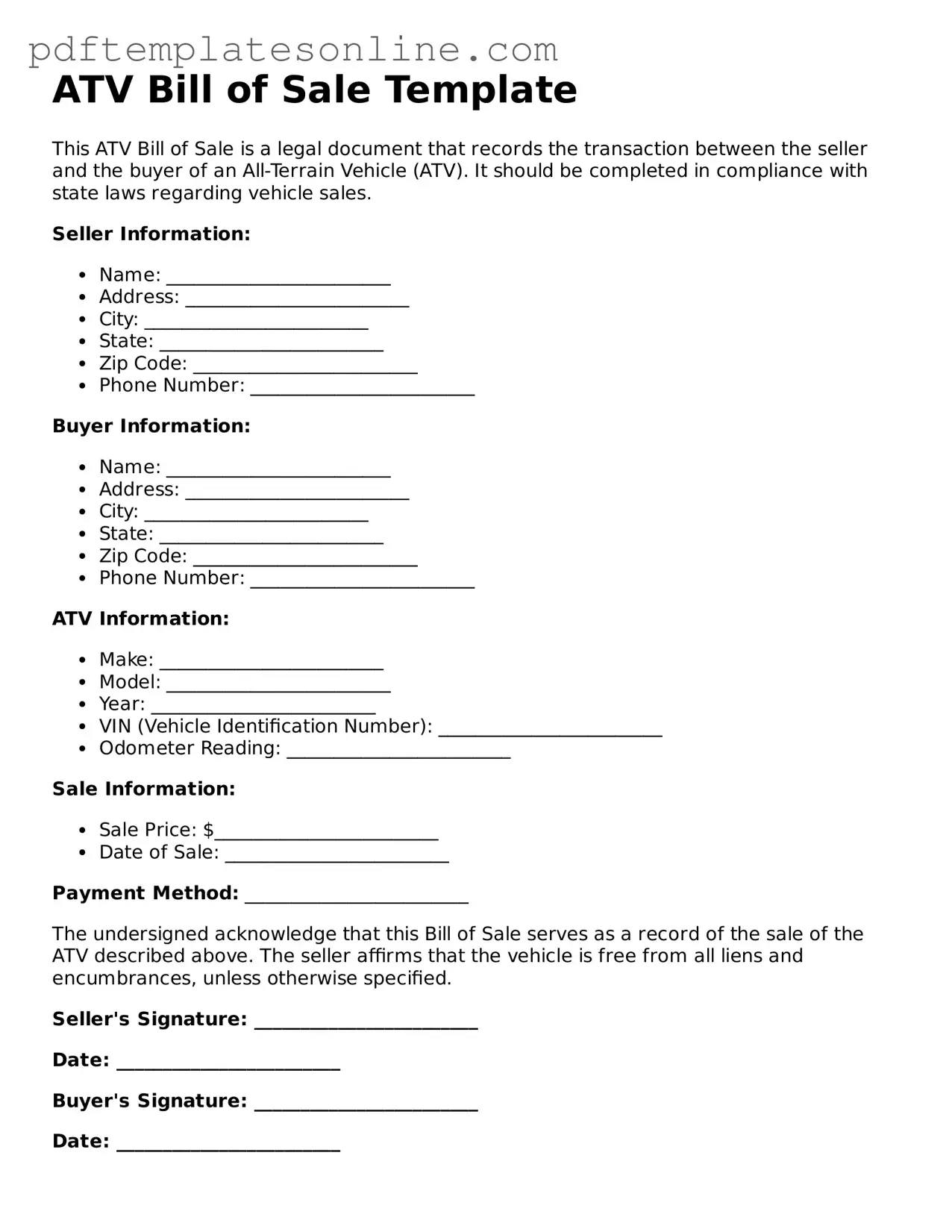Completing an ATV Bill of Sale form can seem straightforward, but many people make common mistakes that can lead to complications later on. One frequent error is failing to provide accurate contact information. Buyers and sellers should ensure that names, addresses, and phone numbers are correct. Incorrect details can create confusion and hinder communication.
Another common mistake is neglecting to include the Vehicle Identification Number (VIN). The VIN is crucial for identifying the ATV and proving ownership. Omitting this number can lead to disputes or issues with registration.
People often forget to specify the sale price. While it may seem obvious, clearly stating the amount helps avoid misunderstandings. Additionally, failing to note whether the transaction includes any warranties or is sold "as is" can lead to legal complications later.
Many individuals also overlook the importance of signatures. Both the buyer and seller must sign the document for it to be valid. Without these signatures, the sale may not be recognized legally.
Another mistake involves not dating the form. A date provides a clear timeline for the transaction, which is essential for both parties. In some cases, the absence of a date can complicate issues related to taxes or registration.
Some people neglect to keep a copy of the completed form. Retaining a copy is vital for personal records and may be needed for future reference. Without it, proving ownership or the details of the sale can become challenging.
Failing to check local regulations is another oversight. Different states may have specific requirements for ATV sales. Ignoring these can lead to delays or penalties in the registration process.
Another mistake is not providing a clear description of the ATV. Details such as make, model, year, and color should be included to avoid any ambiguity. A thorough description helps both parties confirm the correct vehicle is being sold.
Some individuals may also rush through the form, leading to typographical errors. Taking time to review the document can prevent misunderstandings and ensure all information is accurate.
Finally, people sometimes forget to include any additional terms or conditions of the sale. If there are specific agreements between the buyer and seller, documenting these can prevent future disputes. Clarity in the transaction process is essential for a smooth transfer of ownership.
